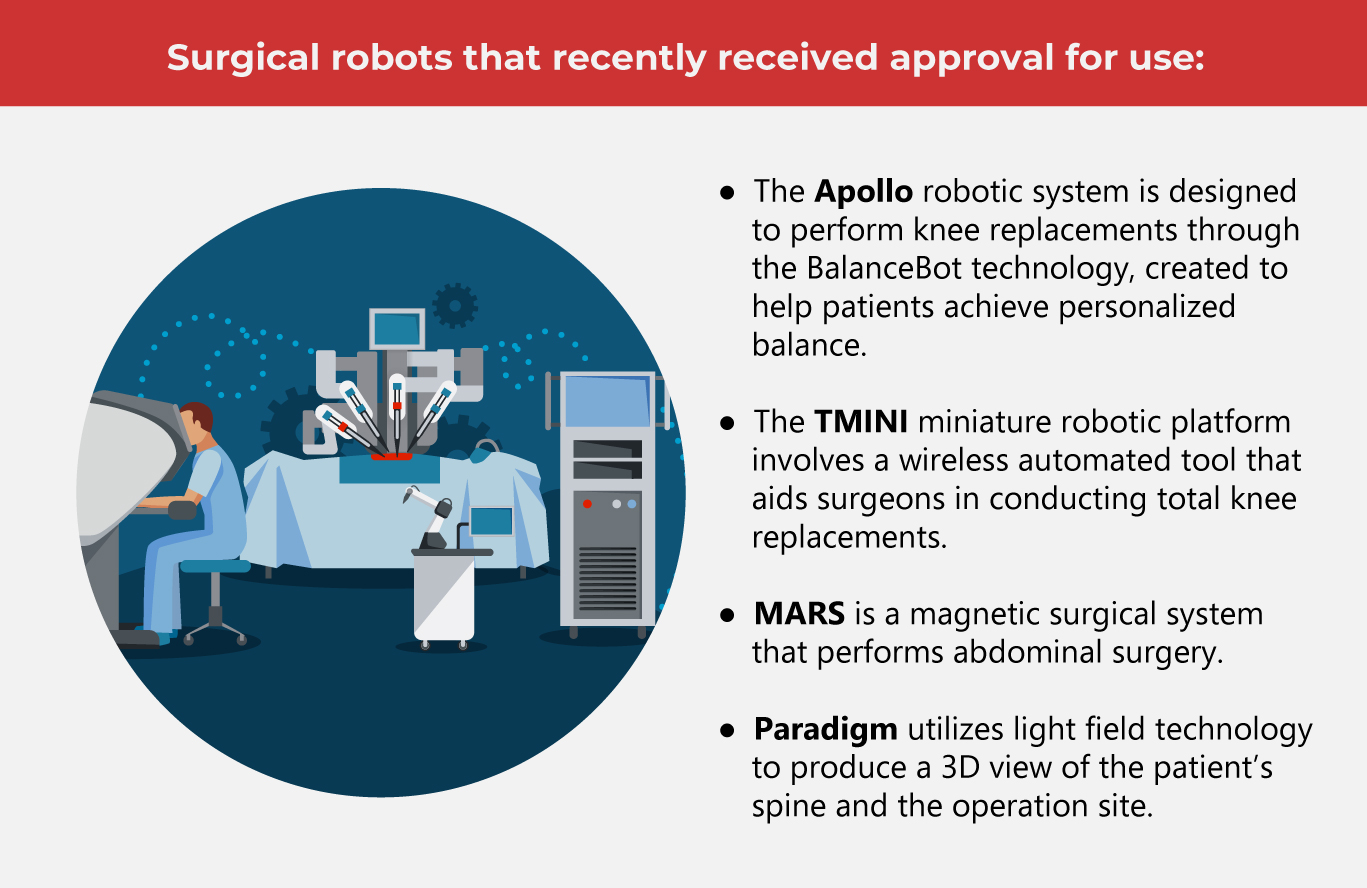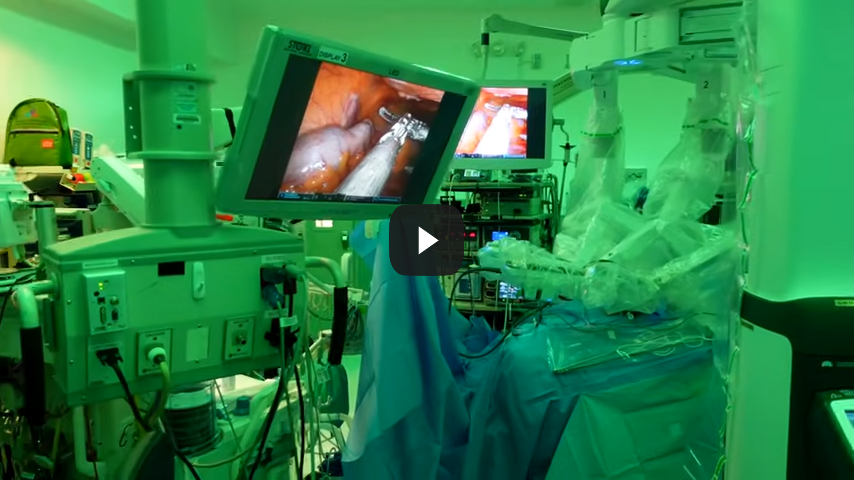Surgical Robots Will Thrive This 2024

Surgical robots have been waking waves in recent years. All over the world, medical teams have introduced and grown their robotic-assisted surgery (RAS) projects. With these developments, 2024 will see a rise in the global demand for RAS.
The first RAS on a living subject was conducted nearly four decades ago. Since then, the use of robotics in surgical procedures has surged—from USD 6 million in 2021 to 17 million by 2027. This rapid expansion is due to the many benefits this advancement offers.
- Better precision
RAS offers visualization systems through high-definition cameras and magnification devices that provide a detailed view of the surgical spot. With clear and amplified visuals, surgeons can better pinpoint biological components and move more accurately. Moreover, robotic arms have joints that simulate a human hand’s range of motion but with the benefit of displaying enhanced stability during intricate operations.
- Real-time feedback & guidance
While conducting surgeries, doctors can refer to robots for tissue properties and other anatomical information to help them modify techniques. Digital algorithms can also help surgeons prepare and plan for complex procedures, enabling them to maximize techniques and instruments.
- Optimized patient recovery
Because RAS instruments tend to be smaller and easier to maneuver than typical surgical devices, surgeons can minimize incision size. This results in faster patient hospitalization and recovery time, reducing pain and bleeding in the surgical site and boosting the healing process.
- Safer surgeries
Some surgeries may be unsafe to perform using the traditional procedure. For example, a surgeon from the United Kingdom reported conducting a colorectal cancer resection on a patient with a high body mass index (BMI), which would not have been feasible through laparoscopy.
Also read: Holograms: From Sci-Fi to the Science of Health
Enter, Da Vinci
One of the tried-and-tested RAS technologies is the Da Vinci Surgical System, which got FDA clearance in 2000 for several procedures, such as general and gynecologic laparoscopy, urologic surgery, and non-cardiovascular thoracoscopy. Since then, the Da Vinci has helped administer over 10 million operations by more than 60,000 surgeons all over the globe.
The system works via a console in the operating room and a cart equipped with three to four console-controlled robotic limbs. These robotic arms can grasp objects and conduct various tasks like cutting, grasping and cauterizing. A human operator—in this case, a surgeon—uses the console to steer the cart’s robotic arms, similar to what a crane operator does.
Though the Da Vinci is almost 8 feet tall, it easily does small, delicate cuts. “Straws” are placed in these incisions, giving access to the necessary medical tools and instruments. These include a 3D camera, enabling the surgeon to have highly-detailed left and right views of the site.
The setup involves the chief surgeon taking charge of the console while a second medical practitioner acts as an assistant by preparing, placing and withdrawing instruments into and from the patient. The robot simulates the surgeon’s movements in real-time, including wrist and hand motions. Additionally, the miniature instruments attached to the robot display a broader range of motion than that of human hands.
A major factor of Da Vinci’s success is patient confidence. According to this article, RAS’s expansion depends on the public and medical sector’s trust in automated systems. Because Da Vinci is still human-controlled, it shatters the misperception that the robot independently handles the surgery. Instead, it is a device manipulated by a competent surgeon, exemplifying the streamlined synergy between robots and humans.
According to the Journal of the American Medical Association, the adoption of robotic surgery rose from 1.8% in 2012 to over 15% in 2018. This growth is particularly pronounced in gynecological and urological procedures.
iKnife for early cancer detection
Invented by Zoltan Takats, a Hungarian laboratory chemist, the iKnife is a “smart” scalpel that analyzes tissue as soon as it makes contact with it during a procedure. This way, the device can provide instant data, such as detecting the presence of cancer cells, in mere seconds. With this information, doctors can immediately remove cancer cells, improving the patient’s health outcomes.
Even during clinical trials, the iKnife has displayed remarkable diagnostic precision, able to differentiate benign from cancerous tissue in the ovary and tumors and normal tissue in the breast. The iKnife uses electrical currents to identify the cancerous tissue by assessing the smoke produced by the vaporized biopsy tissue once it is extracted from the uterus. Additionally, the tool can pinpoint Candida yeast species.
These capabilities can help thousands of women achieve peace of mind faster and easier. A standard pathology typically takes up to two weeks to release results. Though womb or endometrial cancer ranks as the fourth most prevalent cancer in the UK and the US, a UK-based study reveals that only about 10% who displayed symptoms and underwent biopsy are diagnosed with it. Meanwhile, those who received a cancer diagnosis can immediately undergo treatment.
Also read: Cancer-Beating Sound Waves To The Rescue
RAS trends in 2024
Because of RAS’s rapid growth, its technologies are also developing fast. This paves the way for adopting new practices that make RAS even more efficient. Here are some of them:
- Data harnessing
Data gathering and analysis are important aspects of RAS, allowing doctors to gauge their progress in each operation. In time, medical experts can develop a database to standardize robotic-assisted surgical operations.
- AI integration
Artificial Intelligence is the talk of the town, and the healthcare sector is no exception. AI is expected to advance to emerging and current robotic platforms this year, enhancing their functions. Similar to autonomous cars being introduced by the automotive industry, AI can power robotic surgeons to perform tasks independently in the future.
- Improved devices
Soft robotics is in the works, churning out tools built from pliable materials like polymers, gels and elastomers. This technology is useful for drug delivery and minimizing surgery’s invasive nature. Another potential development is nanorobotics, which can produce miniature robots to roam inside the body, reconstructing tendons and detecting diseases.
The RAS industry will only increase with its continued partnership with medical professionals. With the influx of robotic applications that genuinely benefit patients and the healthcare system, this sector offers excellent clinical value while encouraging innovation and better health for all.
As one of the Top 20 EMS companies in the world, IMI has over 40 years of experience in providing electronics manufacturing and technology solutions.
We are ready to support your business on a global scale.
Our proven technical expertise, worldwide reach, and vast experience in high-growth and emerging markets make us the ideal global manufacturing solutions partner.
Let's work together to build our future today.
Other Blog



